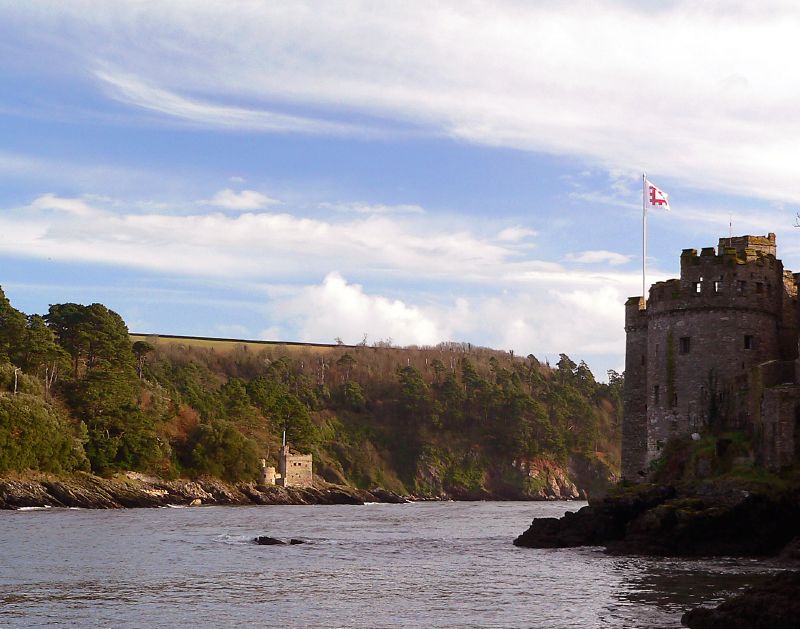|
Holne Ridge
Holne Ridge, on Dartmoor, includes some of southern Dartmoor's highest land. The ridge to the south west overlooks mires and bogs like Aune Head Mires. To the north east it overlooks the Dart Gorge with its many tors; Sharp Tor, for example. It also includes many notable features including: *Ryder's Hill - Highest point on southern Dartmoor and includes Petre's Bound Stone and a trig Point on a small cairn * Horn's Cross - Ancient Cross * Puper's Hill - Cairns * Venford Reservoir - Reservoir supplying water to the Paignton area of south Devon *O Brook - Short tributary of the River Dart *Snowdon - Cairns * Sandy Way - Ancient track * Holne Lee - Cairns * Wheal Emma Leat - Dry leat that used to supply water to copper mines near Buckfastleigh *Holne Moor Leat Holne is a village and civil parish on the southeastern slopes of Dartmoor in Devon, England. A community has existed here since at least the 11th century, and today a population of around 250 people is served by a churc ... [...More Info...] [...Related Items...] OR: [Wikipedia] [Google] [Baidu] |
Dartmoor
Dartmoor is an upland area in southern Devon, England. The moorland and surrounding land has been protected by National Park status since 1951. Dartmoor National Park covers . The granite which forms the uplands dates from the Carboniferous Period of geological history. The landscape consists of moorland capped with many exposed granite hilltops known as tors, providing habitats for Dartmoor wildlife. The highest point is High Willhays, above sea level. The entire area is rich in antiquities and archaeology. Dartmoor National Park is managed by the Dartmoor National Park Authority, whose 22 members are drawn from Devon County Council, local district councils and Government. Parts of Dartmoor have been used as military firing ranges for over 200 years. The public is granted extensive land access rights on Dartmoor (including restricted access to the firing ranges) and it is a popular tourist destination. Physical geography Geology Dartmoor includes the largest ar ... [...More Info...] [...Related Items...] OR: [Wikipedia] [Google] [Baidu] |
Aune Head Mires
An ell (from Proto-Germanic *''alinō'', cognate with Latin ''ulna'') is a northwestern European unit of measurement, originally understood as a cubit (the combined length of the forearm and extended hand). The word literally means "arm", and survives in the form of the modern English word "elbow" (arm-bend). Later usage through the 19th century refers to several longer units, some of which are thought to derive from a "double ell". An ell-wand or ellwand was a rod of length one ell used for official measurement. Edward I of England required that every town have one. In Scotland, the Belt of Orion was called "the King's Ellwand". An iron ellwand is preserved in the entrance to Stånga Church on the Swedish island of Gotland, indicating the role that rural churches had in disseminating uniform measures. Several national forms existed, with different lengths, including the Scottish ell , the Flemish ell l, the French ell une,Brayshaw, Tom S., ed. ''Brayshaw's Mathematical ... [...More Info...] [...Related Items...] OR: [Wikipedia] [Google] [Baidu] |
Sharp Tor
Sharp Tor is a common name given to tors (outcrops), particularly on Dartmoor and Bodmin Moor. All the "Sharp Tors" are listed below with their location and height: *Sharp Tor - Dartmoor (Southern Dartmoor, on Ugborough Moor) - 414m *Sharp Tor - Dartmoor (Dartmeet, on Dartmoor) - 380m *Sharp Tor - Dartmoor (North West Dartmoor, Nr Lydford) - 519m *Sharp Tor - Dartmoor (North east Dartmoor, Nr Drewsteignton, Teign Gorge) - 222m *Sharp Tor - Dartmoor (East Dartmoor, Nr Chinkwell Tor, Widecombe-in-the-Moor) - 418m *Sharp Tor - Dartmoor (West Dartmoor, Nr Peter Tavy) - 340m *Sharp Tor - Dartmoor (Tavy Cleave, on Dartmoor) - 440m *Sharp Tor - Bodmin Moor (Near Minions, on Langstone Downs) - 366m *Sharp Tor - Salcombe (Nr Bolt Head, South Devon) - 123m Sharpitors may also be included in which two extra tors are added to the list: *Sharpitor - Dartmoor (South west Dartmoor, Nr Burrator Reservoir) - 402m *Sharpitor - Dartmoor (North east Dartmoor, Nr Lustleigh ... [...More Info...] [...Related Items...] OR: [Wikipedia] [Google] [Baidu] |
Ryder's Hill
At 515 m, Ryder's Hill is the highest point on the southern part of Dartmoor, Devon, England. On its summit there are two standing stones and a low cairn, on top of which is a triangulation pillar. One of the standing stones is called Petre's Bound Stone and it marks the boundary of three civil parishes: Dartmoor Forest, Holne and Buckfastleigh Buckfastleigh is a market town and civil parishes in England, civil parish in Devon, England situated beside the Devon Expressway (A38 road, A38) at the edge of the Dartmoor National Park. It is part of Teignbridge and, for ecclesiastical purpo .... The cairn, which is not very prominent, has an important history. It was one of the boundary markers of the Forest of Dartmoor mentioned in the Perambulation of 1240 and has been known as "Knattleborough" (or variations of that name) since at least the 17th century. Ryder's Hill can be reached by walking up Holne Ridge from Combestone Tor, past Horn's Cross, a distance of about ... [...More Info...] [...Related Items...] OR: [Wikipedia] [Google] [Baidu] |
Dartmoor Reservoirs
Over the course of the 19th and 20th centuries, several reservoirs and dams were built in the area now covered by Dartmoor National Park in Devon, England to supply drinking water to the rapidly growing towns in the surrounding lowlands. With its deep valleys and high rainfall, Dartmoor was an inevitable location. New reservoirs continued construction even after the establishment of the National Park in 1951. Early schemes to use the moors as a source of drinking water involved the construction of water channels called leats. For example, Drake's Leat (completed 1591) took water to Plymouth and the Devonport Leat (1793) to the docks at Devonport. Rapid population growth of the seaside communities in the late 19th century and the birth of tourism required a significant improvement in quality and quantity of fresh water. The first Dartmoor reservoir (Tottiford) opened in 1861 and heralded a busy era of dam construction which continued through to 1907, by which time the Dartmoor a ... [...More Info...] [...Related Items...] OR: [Wikipedia] [Google] [Baidu] |
Paignton
Paignton ( ) is a seaside town on the coast of Tor Bay in Devon, England. Together with Torquay and Brixham it forms the borough of Torbay which was created in 1998. The Torbay area is a holiday destination known as the English Riviera. Paignton's population in the United Kingdom Census of 2011 was 49,021. (Word document) It has origins as a Celtic settlement and was first mentioned in 1086. It grew as a small fishing village and a new harbour was built in 1847. A railway line was opened to passengers in 1859 creating links to Torquay and London. As its population increased, it merged with the villages of Goodrington and Preston. Paignton is around north east of Plymouth and south of Exeter, and has the fourth largest population in Devon. History A Roman burial was discovered in 1993 on the Hookhills estate by a householder digging a patio. At first thought to be Neolithic, it was later radiocarbon dated to be between 230 and 390 CE. The burial is of a young woman ag ... [...More Info...] [...Related Items...] OR: [Wikipedia] [Google] [Baidu] |
O Brook
The O Brook is a short tributary of the West Dart River on Dartmoor in Devon, England. It lies near the village of Hexworthy, and the lower part of the stream forms the boundary between the parishes of Holne and Dartmoor Forest (formerly Lydford). An earlier form of the name was ''Ocbroke'', and it may mean "Oak Brook", although oaks are rare in the area. The area around the stream is notable for its historic tin mines Tin mining began early in the Bronze Age, as bronze is a copper-tin alloy. Tin is a relatively rare element in the Earth's crust, with approximately 2 ppm (parts per million), compared to iron with 50,000 ppm. History Tin extraction and use can .... A rock formation on the stream bank, known as the Dragon's Den, gave rise to the legend of the Dragon of the O Brook. References Rivers of Devon Dartmoor 1O {{England-river-stub ... [...More Info...] [...Related Items...] OR: [Wikipedia] [Google] [Baidu] |
River Dart
The River Dart is a river in Devon, England, that rises high on Dartmoor and flows for to the sea at Dartmouth. Name Most hydronyms in England derive from the Brythonic language (from which the river's subsequent names ultimately derive from an original Celtic etymology. As the lower stretches of the river are still covered in ancient oak woodlands, it is accepted that the first element derives from *Dar-, meaning oak (derow'', Welsh ''derw''). However the second element (evident in the hard consonantal termination of ''Dar-t'') is less certain, with postulated etymologies from ''Darwent'' / ''Derventio'' (Sacred place of Oak) or ''Darnant'' / ''Darant'' (Oak stream). The Ravenna Cosmography records a number of Latinised names for the area, ''Devionisso Statio'' and ''Deventiasteno'' may represent corrupted doublets of a ''Statio'' (Station) on a river named ''Derventio''. Although the name ''Derventio'' is otherwise unattested for the river, it is an established etymolo ... [...More Info...] [...Related Items...] OR: [Wikipedia] [Google] [Baidu] |
Snowdon (Dartmoor)
Snowdon () or (), is the highest mountain in Wales, at an elevation of above sea level, and the highest point in the British Isles outside the Scottish Highlands. It is located in Snowdonia National Park (') in Gwynedd (historic county of Caernarfonshire). It is the busiest mountain in the United Kingdom and the third most visited attraction in Wales; in 2019 it was visited by 590,984 walkers, with an additional 140,000 people taking the train. It is designated as a national nature reserve (United Kingdom), national nature reserve for its rare flora and fauna. The rocks that form Snowdon were produced by volcanoes in the Ordovician period, and the massif has been extensively sculpted by glaciation, forming the pyramidal peak of Snowdon and the arêtes of Crib Goch and Y Lliwedd. The cliff faces on Snowdon, including Clogwyn Du'r Arddu, are significant for rock climbing, and the mountain was used by Edmund Hillary in training for the 1953 British Mount Everest exp ... [...More Info...] [...Related Items...] OR: [Wikipedia] [Google] [Baidu] |
Sandy Way
Sandy may refer to: People and fictional characters *Sandy (given name), including a list of people and fictional characters *Sandy (surname), a list of people *Sandy (singer), Brazilian singer and actress Sandy Leah Lima (born 1983) *(Sandy) Alex G, a former stage name of American singer-songwriter and multi-instrumentalist Alexander Giannascoli (born 1993) *Sandy (Egyptian singer) (born 1986), Arabic singer * Sandy Mitchell, pen name of British writer Alex Stewart Places * Sandy, Bedfordshire, England, a market town and civil parish ** Sandy railway station * Sandy, Carmarthenshire, Wales * Sandy, Florida, an unincorporated area in Manatee County * Sandy, Oregon, a city * Sandy, Pennsylvania, a census-designated place * Sandy, Utah, a city * Sandy, Kanawha County, West Virginia, an unincorporated community * Sandy, Monongalia County, West Virginia, an unincorporated community * Sandy, Taylor County, West Virginia, an unincorporated community * Sandy Bay (Newfoundland and Lab ... [...More Info...] [...Related Items...] OR: [Wikipedia] [Google] [Baidu] |


.jpg)




